
Lynette Villano, 70, shows off one of her many pieces of Trump memorabilia.
Photography by Jake Naughton for The Globe and Mail
On a sunny Tuesday afternoon in August, dozens of Donald Trump supporters are mingling under a white tent off a busy road in Clarks Summit, Pa. The mood is buoyant: A new campaign office is about to open next door and a musician is playing Jerry Lee Lewis tunes on an electric keyboard.
Eric Trump, the billionaire's son, arrives to perform ribbon-cutting duties. He poses for endless selfies, then addresses the crowd. "It's horrible what's happening out there," he asserts. He then elaborates: Obamacare is a disaster, migrants are streaming across the border, veterans are neglected, and corruption in government is beyond belief.
"Starting with Hillary!" yells out a middle-aged woman standing next to me. "Lock her up!"
Sitting in the audience is Lynette Villano, a 70-year-old grandmother who has lived her entire life in nearby Luzerne County, just south of the campaign office. A square-shaped area spanning the Susquehanna River, Luzerne County earned an unusual distinction during the primary season. It was here that Donald Trump captured the highest proportion of the vote – 77.4 per cent – of any county in America before clinching the Republican nomination.
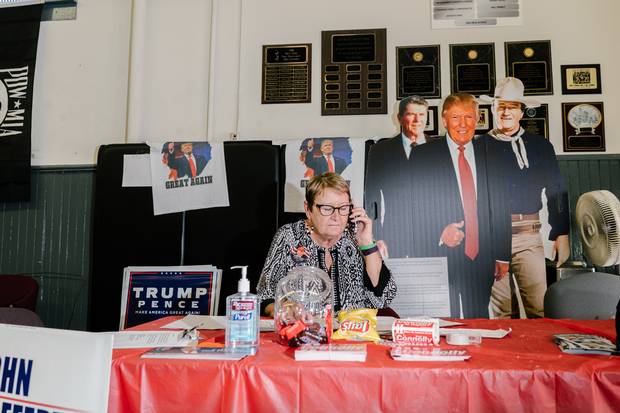
Lynette Villano calls potential voters from the volunteer-run Trump campaign headquarters in Scranton, Pa.

TRISH McALASTER/THE GLOBE AND MAIL
"If you watch the show Happy Days, that's the Luzerne County I grew up in," says Ms. Villano, sitting in a folding chair after the campaign event concludes. As a child, she lived with her grandparents on a street full of German immigrants. Among seven people, they had only one bathroom and one television, but they felt fortunate. Families were close and everyone went to church.
Now, "it just seems like everything is a mess," she says. There aren't jobs to keep young people in the area, and race relations feel worse than they ever were, she says. Newcomers are no longer the same, she believes: The immigrants of her childhood "all came legally," she says. "They learned our way, they didn't come here to change our country."
This small county, known for its green rolling hills and proud industrial past, demonstrates why Mr. Trump – arguably the most implausible major-party candidate in American history – has a plausible chance of becoming the next president of the United States. And it provides a possible glimpse of a rocky global future in which nationalist discontent, fuelled by genuine economic anxiety, may well upend business-as-usual politics.
Luzerne County is a striking example of what can happen to a region grappling with and frustrated by economic, technological and societal change. In a place where the population is predominantly white and older, long-held grievances about lost jobs appear to be combining with something larger and more nebulous: a sense of a lost way of life and a feeling that the country people know is being taken from them.
Large-scale coal mining disappeared from the area decades ago, and so did the garment factories and manufacturing plants that followed the mines. New immigrants arrived in an area that hadn't seen any for generations. Repeated public corruption scandals eroded faith in government. A financial crisis where no one was held accountable was followed by a deep recession and uneven recovery.
By the time Mr. Trump declared his candidacy in June of last year, the ground was prepared.

Why is Trump so popular in this county? We asked around to find out
6:15
Anger at both immigrants and political corruption
About a decade ago, Main Street in Pittston was borderline derelict. Even now, there are empty warehouses and abandoned homes slated for demolition nearby. But years of heroic work by local leaders have yielded results. There are new sidewalks, a small park and three large wall murals, including a tribute to the town's history. It depicts coal miners and "breaker boys" – the child labourers who once separated lumps of coal from rock in the era when mining dominated this area.
Inside Harry Jackett's Lunch, an old-fashioned diner, Kris Zelonis, the owner and chef, is bemoaning the alternatives in the presidential election. Choosing between Mr. Trump and Democrat Hillary Clinton is "like picking the STD that you're most okay with having," he says, in a tone that seems only half-joking. Mr. Zelonis detests Mr. Trump, but his mother is a devoted fan. "She likes him because he speaks his mind and he says he'll get rid of all the immigrants," explains Mr. Zelonis.
For such voters, Mr. Trump's racially charged statements aren't troubling. They're just further evidence that he isn't a typical politician. "I just like the way he talks, it's direct and to the point," says Frederick Collins, 47, as he tucks into breakfast: a plate of eggs and a BLT. "It doesn't matter if he's offended people. Suck it up, buttercup. You don't like what he says? Don't watch him, problem solved."
Mr. Collins, a native of nearby Duryea, is a registered Democrat who nonetheless considers himself an independent. He says he will vote for Mr. Trump "in a heartbeat." Mr. Collins has no problem with legal immigration. But anything else, he says, calls for strong measures – "Take the military, sweep the whole country, and get all the people out who don't belong here."
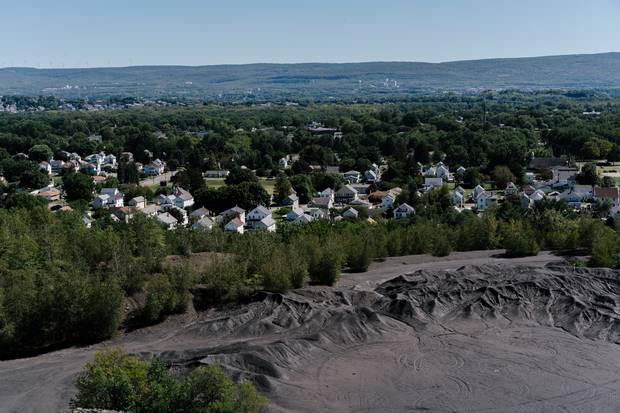
Swoyersville, Pa., as seen from the top of the Harry E. Culm Bank, a giant mountain made of coal waste.
Home to 320,000 people, Luzerne County has more registered Democrats than Republicans: George H.W. Bush was the last Republican presidential candidate to win here, in 1988. But this time Mr. Trump has managed to appeal to voters from both parties.
The county is 84 per cent "non-Hispanic white," to use the term employed by the U.S. census, and a third of the population is aged 55 or older. Only 21 per cent of residents over the age of 25 hold college degrees – the national figure is 33 per cent.
Statistically speaking, those numbers make the area a potential sweet spot for Mr. Trump. Jonathan Rothwell, an economist at polling firm Gallup, analyzed data from 80,000 Americans surveyed about the election over a 12-month period. The two most robust factors in predicting an area's support for Mr. Trump? A higher proportion of white residents and of residents without a college degree.
Immigration also turns out to be a surprisingly resonant issue in Luzerne County. About 15 years ago, the Latino population of Hazleton, a city in the county's south, began to grow. The new residents were mostly Puerto Ricans – who are U.S. citizens – and Dominican immigrants moving from cities like New York and Philadelphia.
In response, Lou Barletta, then the Republican mayor of Hazleton, spearheaded the passage of two ordinances aimed at deterring illegal immigration in 2006. The city threatened to impose a $1,000-a-day fine on landlords renting to undocumented immigrants and to revoke the business licences of employers hiring them. It proclaimed English the official language of city business and required municipal employees to seek authorization before translating documents into other languages.
The ordinances catapulted Mr. Barletta into the national spotlight. The American Civil Liberties Union and the Puerto Rican Legal Defense and Education Fund sued Hazleton on the grounds that the laws were unconstitutional. The city fought a protracted and ultimately unsuccessful legal fight to defend the ordinances, a battle that ended only in 2014 when the U.S. Supreme Court declined to hear an appeal of the case.
Meanwhile, Mr. Barletta went from mayor of Hazleton to member of the U.S. Congress, representing a district that includes much of Luzerne County. In March, he became one of the first U.S. representatives to endorse Mr. Trump. (He did not respond to requests to comment for this story.)
While Luzerne County was built by immigrants – successive waves of Irish, Germans, Italians, Poles, Lithuanians and others flooded into the area in the 19th and early 20th centuries – it has been decades since it experienced noticeable numbers of new arrivals. Immigration is a "resonant, symbolic, emotionally powerful issue," says Daniel Hopkins, a political scientist at the University of Pennsylvania who studies racial and ethnic politics. In parts of the U.S., Britain and elsewhere in Europe, he adds, immigration policies "have come to be seen as the product of elite collusion," feeding the perception that "the government is not putting native-born citizens first."
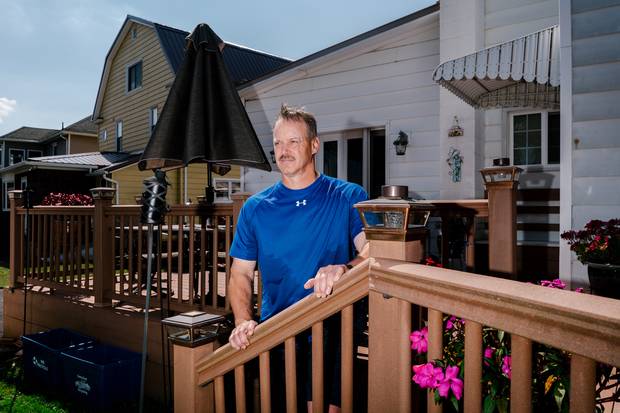
Randy Proctor: ‘I don’t know how our kids are going to raise kids in an environment like we did.’
Randy Proctor, 58, is a bus driver who lives in the hamlet of Forty Fort. He drives a route to and from New York City. "I see people coming who can't even speak English," he says. "You wonder: 'How can they be coming back and forth?'"
Mr. Proctor says he's never seen as much diversity in the area as in the last five years. "I don't know how our kids are going to raise kids in an environment like we did," he adds. Mr. Proctor grew up in poverty in New Mexico and remembers what it was like to go to food banks and to hunt rabbits to eat. When he sees food-stamp recipients filling up their carts at Wal-mart and swiping a government-issued card to pay, he chafes at what he sees as a sense of entitlement.
The sense that government services are somehow being abused – by undocumented immigrants and welfare recipients – is a common theme in Luzerne County. The anger at the supposed waste of taxpayer dollars is matched by a deep suspicion of the political system. Locals often refer with disgust to the "kids for cash" scandal that erupted here in 2008. Two Luzerne County judges received prison sentences after taking millions of dollars in kickbacks from Robert Mericle, a local businessman. In exchange for the bribes, the judges meted out harsh or arbitrary sentences to more than 2,500 juvenile delinquents, who were sent to two private detention centres run by Mr. Mericle.
Since 2009, federal prosecutors have charged more than 30 people in cases involving political corruption in northeastern Pennsylvania, including the former state treasurer. "We've always been a pretty substantial state for public corruption, but the spate of it in the last five to seven years rivals anything in recent history," says G. Terry Madonna, a professor of public affairs at Franklin & Marshall College in Pennsylvania. "That plays into Trump's anti-government, anti-establishment message."
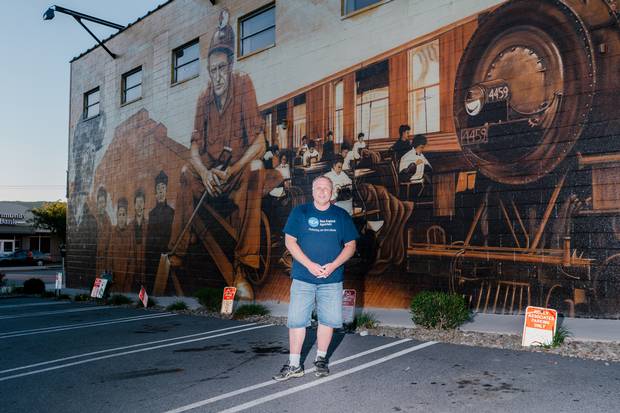
Ron Faraday, president of the Greater Pittston Historical Society and a production supervisor at Greiner Packaging, stands in front of a mural commemorating the Pennsylvania town’s history.
On the wrong side of technological change
In early 1959, a group of miners was working in a Knox Coal Company mine beneath the Susquehanna River. The mine administration had ordered the men – illegally – to dig closer and closer to the river bed. On Jan. 22, the waters broke through the rock, inundating the mine and killing 12 men, whose bodies were never recovered. The catastrophe effectively ended anthracite coal mining in this part of Pennsylvania.
Garment factories sprang up in the area. And while they didn't provide enough jobs to replace the coal mines, they offered a source of income for local people, especially women, who either worked at the factories or did piecework at home. Manufacturing businesses also opened in the county, including a large Owens-Illinois plant in 1968 that produced glass plates for television screens.
Ron Faraday worked at the television plant for more than two decades. The facility was so big, he recalls, that employees drove golf carts to get around. With about 2,000 workers at its peak, the factory – later owned by Japan's NEG and christened Techneglas – was the largest employer in Luzerne County.
By the 1980s and 1990s, a second wave of economic change was sweeping through the area. Nearly all the garment factories shut down, felled by competition from elsewhere in the U.S. and from overseas. Techneglas, too, was struggling. NEG opened similar manufacturing plants in Mexico, Indonesia and China. But the bigger problem was that the Pennsylvania factory was on the wrong side of technological change: Increasingly, consumers wanted flat-screen displays, not the clunkier televisions whose glass plates were made in Pittston. Mr. Faraday, then a supervisor at the plant, recalls handing out 100 layoff slips at a time.
The end came in 2004. That's when Techneglas shut down its Pittson plant as well as two factories in Ohio. Workers were eligible for a government program created to assist people whose jobs were lost as a result of trade. Mr. Faraday used the help to get a two-year degree in hotel and restaurant management. He later completed a bachelor's degree in business administration.
But his experience over the past decade shows just how difficult the climate has been: Mr. Faraday has worked for four companies, been laid off twice, and spent nearly a year unemployed. Now he is a supervisor at a small manufacturer of plastic yogurt cups, which employs about 50 people.
In his spare time, Mr. Faraday runs the Greater Pittston Historical Society. As he reflects on the area's economic trajectory – from mining "black diamonds" of anthracite coal to working in garment factories to the present – he seems weary. "We fuelled the industrial revolution," he says. "After that, we were relying on blood, sweat and tears. Now we kind of need a break."
Mr. Faraday sounds as if he could vote for Mr. Trump. A gun owner, he's worried about the government infringing on Second Amendment rights, and feels the U.S. is losing its identity. But this election can make voter preference hard to predict – Mr. Faraday says both candidates leave him cold.
He pulls up a YouTube video of the Techneglas factory in Pittston being demolished. As dramatic music plays, aerial footage shows an enormous industrial furnace crumbling to the ground. "How," he asks, "is Donald Trump going to bring that back?"
Mr. Faraday finds Mr. Trump's promises to revive coal mining repellent. "That's ridiculous to anyone with a brain," says Mr. Faraday. "We don't want those jobs back." ("A lot of us got a kick out of when he said he was going to bring back the mines," adds Dave Janoski, managing editor of The Citizens' Voice, a paper in nearby Wilkes-Barre. In this part of Pennsylvania, "it's like saying you're going to bring back whaling.")
After the twin blows of technological change and globalization, along came the financial crisis of 2008 and the ensuing recession. While economic conditions have improved since then, it's easy to see why Mr. Trump's promises to bring back well-paying jobs – even if short on specifics – resonate in this part of the country.
"The electorate here is very frustrated," says Aaron Kaufer, a Republican state representative whose district includes part of Luzerne County. President Barack Obama "promised massive change, which wasn't realized, and that has really even further frustrated people."
As of July, the unemployment rate in Luzerne County was 7 per cent, according to U.S. government statistics, higher than the rate for the state and the country as a whole. That rate has fallen from its postrecession peak of 11.3 per cent, touched in 2013. But the most plentiful jobs are of the low-paying variety, locals say.
Drawn by the county's cheap real estate and labour and its proximity to interstate highways, a handful of major companies have set up distribution centres here. There's a flourishing casino in Wilkes-Barre, the biggest city in Luzerne County, and a couple of small technology firms. Among the remaining options, says Mr. Zelonis, the restaurant owner, are scraping by at an independent business or working at "Wal-mart or flipping burgers or making pizza."
There is palpable worry among middle-aged white voters about how their children and grandchildren will fare in a country that no longer seems able to deliver on one of its central compacts: that each generation will fare better than the one that came before it.
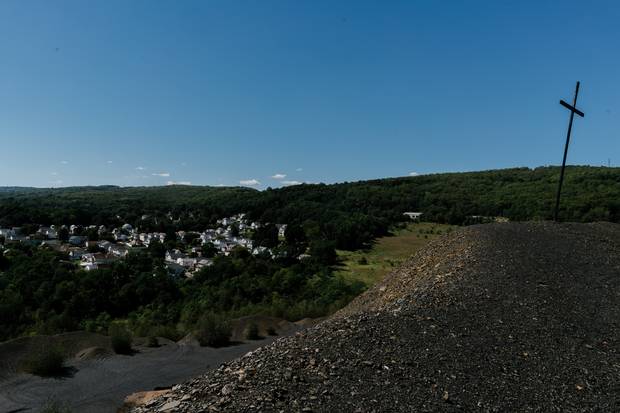
A mining catastrophe in 1959 effectively ended anthracite coal mining in this part of Pennsylvania. The huge banks of coal waste still remain.
JAKE NAUGHTON/FOR THE GLOBE AND MAIL
'An incentive to make politics about race and identity'
Voters in places like Luzerne County may well decide the outcome of November's election. If Mr. Trump is to have a chance of victory, he must win over not only those who supported him in the primaries, but large numbers of white voters in postindustrial areas like this one. In this part of Pennsylvania, he appears to be doing just that. The latest poll by Franklin & Marshall College found that 42 per cent of registered voters in the northeastern section of the state support Mr. Trump, compared to 35 per cent who are backing Ms. Clinton. (Intriguingly, 15 per cent said they weren't yet sure.)
Some experts believe that voters in areas like Luzerne County are merely helping to complete a decades-long realignment in American politics that began in the 1960s when Southern whites started abandoning the Democratic party. With Mr. Trump as its standard-bearer, the Republican Party has become more closely identified with a populist, nationalist and nativist message squarely aimed at white middle- and working-class voters. By contrast, the Democratic Party is turning into the natural home of minority voters, highly educated urbanites and the well-off beneficiaries of a changing economy, who are united by their distaste for Mr. Trump's message.
The dividing line between the two parties no longer hews to questions of economic policy so much as issues of identity, says Lee Drutman, a senior fellow at the Washington-based think tank New America. Leaders in both parties "have an incentive to make politics about race and identity because that's the one thing that's actually keeping their party coalitions together," he says. "You can think of it as basically the culmination of one era in American politics and the beginning of another."
Gary Marinangeli, 65, lives in the county next to Luzerne. A few years back, he lost his job as a hospital cafeteria supervisor after three decades. He changed his voter registration from Democrat to Republican expressly in order to vote for Mr. Trump in the primary. If his candidate loses, "I really believe in my heart we're done," he says. He vows to move to Canada. "What do we have to stay here for? To watch our kids suffer? To watch our grandkids suffer?"
It's common to hear Trump supporters in the area talk in near-apocalyptic terms about what will happen if their candidate loses in November.
But sometimes there are surprises. Asked his opinion of a future with Ms. Clinton as president, Mr. Proctor, the bus driver, grows philosophical as he sit in a Luzerne County coffee shop. "I give everyone a chance," he says. "If she can prove to me that she can change things, that's great." He pauses. "Just as long as it doesn't stay stagnant."
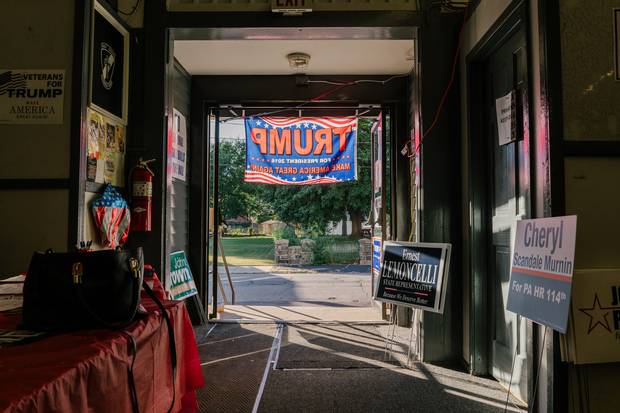
Joanna Slater is a U.S. correspondent for The Globe and Mail.
Follow her on Twitter: @jslaternyc
Editor's note: An earlier digital version of this story incorrectly stated that Eric Trump is Donald Trump's youngest son. This version has been corrected.
U.S. ELECTION 2016: MORE FROM THE GLOBE AND MAIL
Watch the highlights from Trump’s GOP speech in under four minutes
3:30



